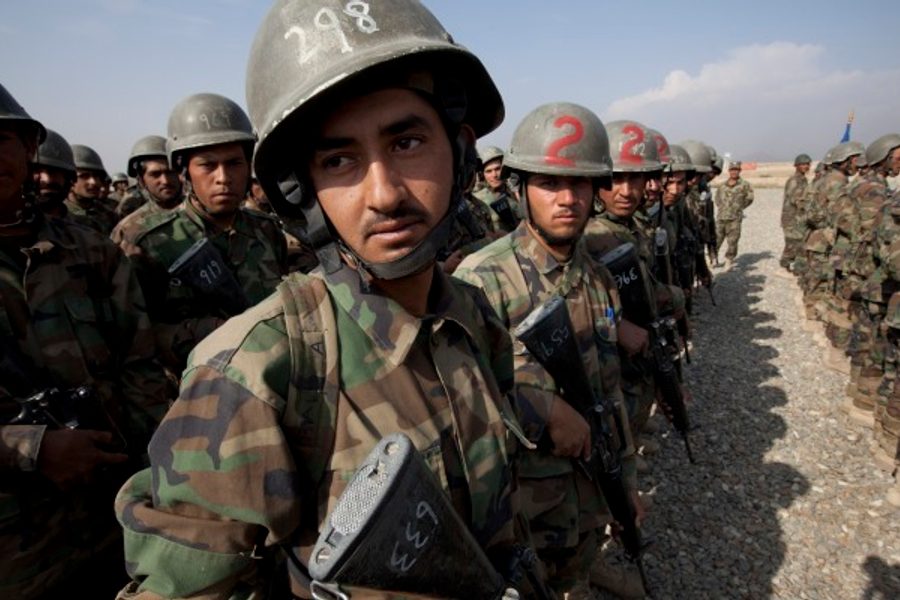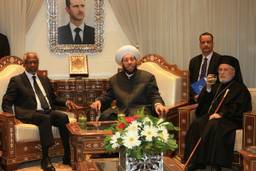
NATO countries and regional allies are tiring of the 11 year occupation of Afghanistan. In February, Hamid Karzai equated American soldiers with Taliban insurgents calling them both “demons.” Meanwhile, Pakistan’s Inter-Services Intelligence (ISI) is widely believed to openly support Afghan insurgents who have taken shelter in their country. At home, American public’s support for the war is at an all-time low, with a recent CBS poll finding that “[m]ost Americans (55 percent) say they do not have a clear idea of what the U.S. is fighting for in Afghanistan.” Even Republicans, traditionally stalwart supporters of the war, are growing more disillusioned.
But in the last two months, the U.S. has signed two memoranda of understanding with Afghanistan which have paved the way for a longer-term strategic partnership agreement between the two countries. On April 8, U.S. and Afghan officials signed an agreement regarding all special forces operations in Afghanistan, including the much discussed question of “night raids.” In early March, both countries hammered out how the “gradual transfer of control” of the U.S. prison at Parwan to Afghanistan would be accomplished.
While these two steps might seem like acts of a country looking to leave, the U.S. is committing itself to a longer term involvement in Afghan affairs.
Where We Are Now
Right now there are about 90,000 U.S. troops in the country. Here are the main points of the current plan to transfer security operations to Afghanistan by the end of 2014:
Obama has pledged to reduce the number of troops to 68,000 troops by September 2012 with more reductions until 2014, when full transfer of security operations to Afghan National Security Force (ANSF)—which is made up of Afghan National Police (ANP), Afghan Local Police (ALP), and the Afghan National Army (ANA)—is supposed to be accomplished.
The ultimate number of troops that will remain on the ground after 2014 has not yet been determined. Whatever the number, it is likely that the remaining force will be made of up of special operations teams who will be “paired with” ANSF units—a tactic already being implemented in many areas of the country.
ANSF is aiming to have a 352,000 strong “surge force” in place by the end of 2012 which will be drawn down to 230,00 sometime after 2014.
Many of the critical issues surrounding the current plan were discussed by members of the Senate Armed Services Committee on March 22 with General John R. Allen, Commander of the U.S. Forces Afghanistan (USFOR-A) and the International Security Assistance Force (ISAF), and Dr. James N. Miller, Acting Under Secretary of Defense for Policy.
Though Miller claimed that the transfer to Afghan security forces is going well and is on track to reach the goal of a “surge force” of 352,000 troops before October 2012, Senator Ben Nelson (D-NE) referred to a leaked report last summer which had criticized previous inflated statements of ANSF readiness.
Money of course was a major concern of all parties. As Dr. Miller stated $11 billion in support for Afghan security forces has already been requested in fiscal year 2012, and another $5.8 billion is already projected to be needed for fiscal year 2013. Sen. Susan Collins (R-ME) added that, beyond 2013, American taxpayers are still going to have shoulder part of ANSF projected operating budget of $4 - 5 billion per year for the next 10 years.
Though the exact amount of U.S. aid has yet to be determined, under a current plan, “At least $1.3 billion would come from existing foreign donors, triple the amount they currently spend. The Afghan government would contribute $500 million, and the United States would pay the rest.” (Of course, whatever the amount of U.S. military aid, there is a question of how much of it will be lost to corruption and fraud in the Karzai Administration—to say nothing of corruption and fraud of American defense spending due to lack of sufficient oversight.)
Despite any doubts, all of the members of the committee were clear in their support of continued U.S. invovlement in Afghanistan. The reason for such unwavering support was articulated by Senator Lindsey Graham (R-SC) who said that Afghanistan is still considered as the “center of gravity of the moment of the war on terror” by the political and economic leaders of our country.
What’s Next?
Though details of the draw-down and transfer are still being hashed out, it is clear America will be in Afghanistan for a long time. Beyond U.S. security concerns, the fact that Afghanistan’s economy is severely dependent on foreign aid means that a truly independant Afghanistan is still a ways off. According to the World Bank:
The country is highly aid dependent with foreign aid disbursements of 47 percent of GDP in 2008/09. Only little is produced for export purposes while the country depends heavily on imports for reconstruction and food. (…).
The Government Accountability Office made a similarly frank assessment last fall:
The United States and other donors funded about 90 percent of Afghanistan’s estimated total public expenditures from SY2006 to 2010. In particular, donors funded on average 57 percent of on-budget expenditures and 100 percent of off-budget expenditures. Over this period, the United States provided 62 percent of estimated total public expenditures, while other donors provided 28 percent. The United States funded an estimated 90 percent of Afghanistan’s total security expenditures during this time period. The United States funded an estimated 39 percent of Afghanistan’s total non-security expenditures during SY2006 to 2010.
Securing continued support from allied countries is a chief goal of NATO’s May conference in Chicago and July’s Tokyo Conference.
One final note: If there is a Republican win in the fall, it is doubtful that Romney will fundamentally change the U.S. approach to the war. American politicians of all stripes seem to enjoy extending their decision making power to all parts of the globe and to use the CIA and Special Forces to execute their will without impunity. If Obama does win a second term, he will likely only continue to show how Democrats can sabre-rattle with the best Republican hawks.
Please consider supporting our work.

I hope you found this article important. Before you leave, I want to ask you to consider supporting our work with a donation. In These Times needs readers like you to help sustain our mission. We don’t depend on—or want—corporate advertising or deep-pocketed billionaires to fund our journalism. We’re supported by you, the reader, so we can focus on covering the issues that matter most to the progressive movement without fear or compromise.
Our work isn’t hidden behind a paywall because of people like you who support our journalism. We want to keep it that way. If you value the work we do and the movements we cover, please consider donating to In These Times.



